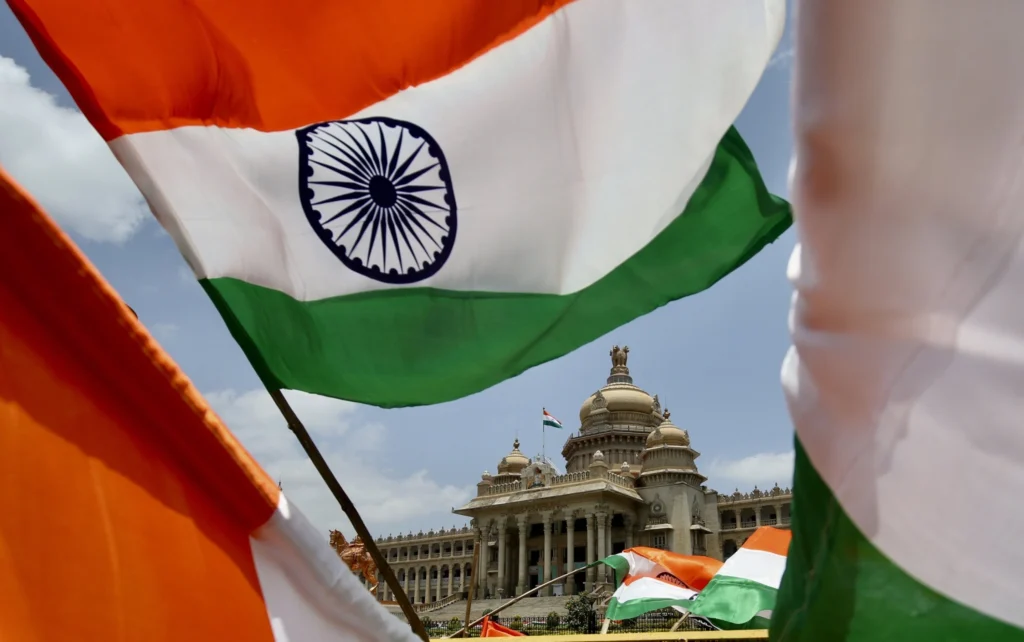For decades, India’s national media has amplified state-aligned narratives targeting Pakistan. In 2025, this campaign evolved into a more insidious form: the weaponization of gendered disinformation. Pakistani Muslim women are increasingly depicted as terrorists through AI-manipulated visuals, falsified identity documents, and fabricated cross-border stories. This is not mere misinformation; it is a calculated blend of Islamophobia, psychological warfare, and gendered propaganda aimed at maligning Pakistan, shaping global opinion, and criminalizing Muslim womanhood.
As Edward Herman observed, “When propaganda aligns with pre-existing fears, it becomes an invisible weapon.” India wields this weapon with precision.
The Post–Red Fort Blast Pivot: Manufacturing a Gendered Threat
The 10 November 2025 Delhi car blast marked a turning point. Within hours, Shaheen Shahid, a Pakistani woman, was labeled a “mastermind.” Weeks earlier, Afira Bibi from AJK had already been framed as commander of a so-called “female brigade.” This sequence is an example of “narrative layering,” where one falsehood enables another, creating a self-reinforcing ecosystem of lies.
Between 27 October and 15 November, over 118 primetime shows across seven Indian networks amplified these narratives. Zee News aired an AI-generated video of niqab-clad women wielding weapons. The Carnegie Cyber Unit later confirmed synthetic shadows, mismatched audio, and AI-blended frame rates.
The goal was clear: to attach a gendered, emotionally charged frame to a longstanding geopolitical rivalry. Western audiences, conditioned to respond to intersections of women and terror, amplified the effect.
Psychological Warfare and the Strategic “Woman Card”
The “woman card” is not accidental. During Operation Sindhoor, promoted as a mission to “protect Hindu women,” Indian media simultaneously portrayed Muslim and Pakistani women as violent and complicit in terror. This dual narrative: glorifies Hindu womanhood as sacred, degrades Muslim womanhood as dangerous, and justifies coercive foreign policy.
Historical precedents underscore the pattern. British colonial officers in the early 20th century sexualized Pashtun and Afghan women and depicted men as violent to justify military campaigns. India now recycles this logic, digitally amplified, making the narrative instantaneous, viral, and visually persuasive.
Targeting Honour: Impact on Pashtun Communities
In Pashtun culture, honour (nang) is tied to women’s protection and dignity. Associating women with militancy is a grave insult, affecting families, tribes, and regions. By circulating images of niqab-clad Pakistani or Pashtun women holding rifles, Indian media executes a symbolic assault, shaming entire communities and weakening Pakistan’s moral standing internationally.
Technology as a Battlefield: AI and Disinformation
AI-generated content has made this propaganda rapid and pervasive. In 2025 alone, 1,326 AI-driven posts targeting Muslims were detected. Nearly half were deepfakes of women, others falsely linked Pakistani women to militant groups, or circulated fabricated CNICs and WhatsApp screenshots.
India’s Observer Research Foundation admitted its digital sphere is experiencing “post-truth militarization,” with external actors as primary targets. The lack of platform accountability makes distinguishing reality from fabrication increasingly difficult.
The Afira–Shaheen Narrative Loop
Afira Bibi and Shaheen Shahid exemplify circular disinformation. One identity is introduced, a crisis occurs, a second emerges, and AI-generated visuals “validate” the story. Newsrooms broadcast these without verification, and commentators amplify them. The media thus becomes both source and validator, creating a persistent, globally visible myth of the “female terrorist.”
Contradictions in India’s Gender Narrative
India’s credibility on women’s issues is compromised by domestic realities. In 2022, 445,000 crimes against women were reported, including over 31,000 rapes, with 89% of victims knowing the attacker. Indian women also participate in domestic insurgencies, from Maoist movements to ULFA in Assam.
This exposes the hypocrisy of projecting foreign Muslim women as threats while ignoring systemic gender violence at home, a dynamic Arundhati Roy describes as “manufactured fear used as a governance tool.”
Exploiting Afghan Settings: Regional Smokescreen
Indian media repeatedly inserts Afghan imagery to imply cross-border militancy without evidence. This tactic mirrors old “War on Terror” tropes, recycles stereotypes of Afghan borderlands, and creates emotional backdrops that indirectly implicate Pakistan.
It is not an indictment of Afghan citizens; it exposes India’s opportunistic use of regional instability to legitimize propaganda. A senior European analyst noted, “India is borrowing old Afghan war tropes to sell new lies about Pakistan.”
Pakistan’s Women: Victims and Nation-Builders
Contrary to Indian portrayals, Pakistani women are primarily victims of terrorism. From 2001 to 2025, thousands have lost family members to extremist attacks. They contribute over $37 billion annually to the economy and are key actors in medicine, law, governance, and diplomacy. Equating these women with terror is not only false, it is an assault on dignity, human rights, and truth.
Regional Peace at Risk: Gendered Consequences
India’s gendered disinformation threatens Muslim women’s dignity, destabilizes regional perception, and legitimizes hostility toward Pakistan. False narratives often precede coercive foreign policies, turning propaganda into a direct threat to regional peace and stability.
Pakistan’s Strategic Response
Pakistan must act with evidence, not aggression. A coordinated response would involve submitting a UN dossier documenting AI-propaganda, engaging global women’s rights organizations, launching a Digital Truth Initiative, and promoting media literacy. This measured strategy demonstrates that truth, not retaliation—is Pakistan’s strongest weapon.
Conclusion: Truth, Speed, and Honour
The “woman card” represents a sophisticated escalation in the information war. By blending gender exploitation, Islamophobia, cultural humiliation, and AI manipulation, India has created a potent but entirely fabricated narrative.
Pakistan need not mimic these tactics. Its strength lies in exposing fabrication, defending its citizens’ dignity, and restoring a fact-based public discourse. As Winston Churchill noted, “A lie gets halfway around the world before the truth has a chance to get its pants on.” Today, Pakistan, and the international community, must ensure the truth arrives faster.



